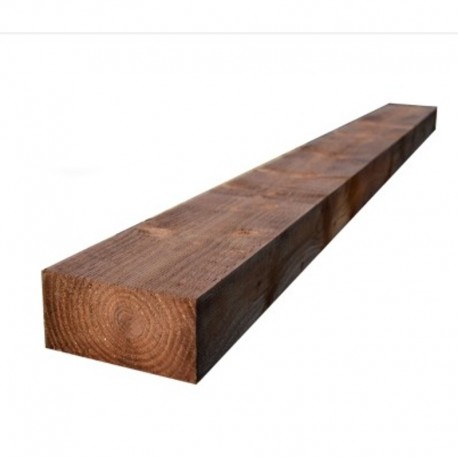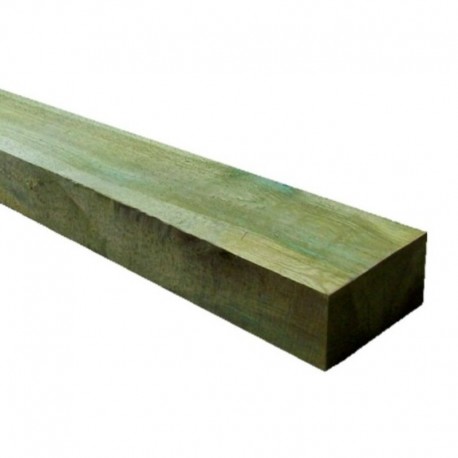Sleepers have a lot of applications around the garden. But what is the difference between hardwood and softwood ones? With so many varieties and producers out there, you may find it difficult to select the right kind. Read below to learn more about their durability, maintenance, cost, and more.
Main differences between hardwood and softwood
Did you know that the words “hard” and “soft” in their name have nothing to do with the hardness or softness of the wood? Instead, these terms refer to the seed and tree the wood comes from. Hardwood tree seeds have some form of covering on them, such as a fleshy coating or a firm shell. Softwood tree seeds, on the other hand, don’t have any coat or cover.
To give you a better idea of their properties, the table below answers some common questions, such as “Are oak sleepers better than softwood”, “Does hardwood need to be treated?” and “How long do hardwood sleepers last?”.
| Criteria | Softwood sleepers | Hardwood sleepers |
| Origin | Conifer trees | Deciduous trees |
Cost | Cheaper (by 20-30%) | More expensive |
| Weight | Lighter (about 30kg each) | Heavier (about 60kg each) |
| Weather resistance | Less resistant, unless modified or treated | More resistant to water and fire |
| Applications | Windows, doors, furniture, MDF, etc. | High-quality furniture, decks, flooring, and construction that needs to last longer |
| Durability | Not durable, no more than 5 years if not treated, and up to 20 years if treated. They tend to turn grey. | More long-lasting and resistant to decay, 30 years if untreated and up to 100 years if treated. They retain treatment colour. |
| Environmental impact & sustainability | More environmentally friendly because softwood trees grow faster and require less energy to cut and dry | Take longer to grow, are harder to replenish, and need more resources to cut and dry |
| Maintenance | Need to be pre-treated (tanalised) with Tanalith or Tanatone to prevent decay. Regularly apply a decking oil or wood preservative. | Don’t need treatment as they’re naturally resilient. Can be purchased green. You could apply some oil (linseed, Danish, etc.) |
| Handling and building | Easier to work with, e.g. you can use nails | Harder to work with, you need predrilled holes or you risk splitting the wood |
Choosing the right sleepers

Hardwood vs. softwood depending on the task
To pick the most suitable wood for your garden project, you need to ask yourself several questions. For example: How long do softwood sleepers last with and without treatment? Is my structure likely to be in regular contact with moisture? And so on.
Hardwood sleepers are best suited for your raised beds and borders, steps, pathways, retainer walls, and even furniture you may wish to build. Oak sleepers are a common choice among UK gardeners for a reliable long-term investment. Due to their density, you may first need some information on how to cut hardwood sleepers, lay them, or fix them together.
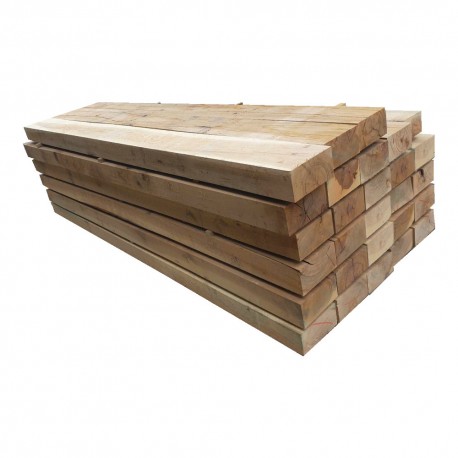
Softwood sleepers (e.g. pine sleepers) are also used for a number of these projects, including raised beds, steps, and more. In fact, gardeners often choose them for their cost-efficiency and easy handling. Sleepers can be laid directly on the ground, especially if you’re building something that's one or two sleepers in height. However, some people still prefer to build a foundation. Either way, it’s best to use a bed of sand, gravel, etc. to ensure good drainage. The same goes for retaining walls - place a membrane behind them to keep moisture away.
Natural wood vs. reclaimed railway sleepers
Due to health concerns, you should avoid using reclaimed railway sleepers. They have often been treated with creosote - a chemical that prolongs their life but has been banned from sale to the public as of 30 April 2023. Instead, pick new railway sleepers that are available in a wide range of sizes and finishes.
Finding quality sleepers
Always source your sleepers from a reputable source that supplies verified products. You should look for any necessary certifications, for example, Use Class 4 (UC4) - suitable for permanent ground contact. Also, to facilitate delivery, you’d want to look for companies that deliver using crane-equipped vehicles.
How to build with sleepers
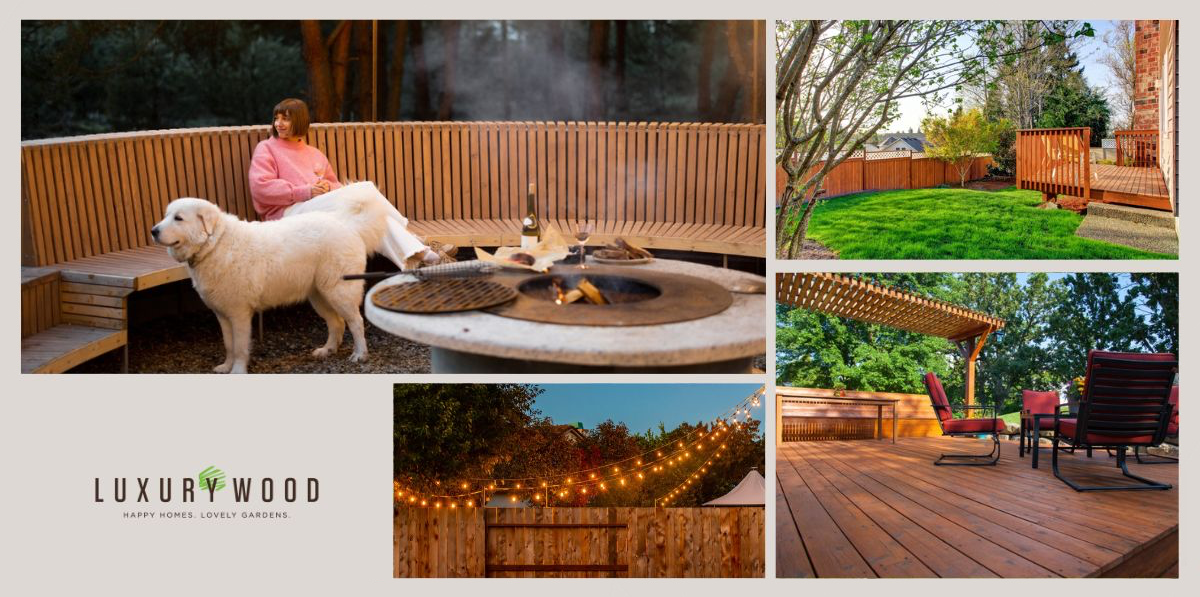
Sleepers are extremely versatile in terms of their application. And that’s great news from two perspectives: First, by building several things from sleepers, you will achieve a uniform look for your garden where all elements fit perfectly together. Second, using more of the same material means it will be easier for you in terms of logistics, ordering large quantities, etc.
We’ve listed just some of the beautiful things you can build with sleepers:
- Raised Flower Beds – Use sleepers to build beautiful raised beds to grow produce or flowers. For example, you can stack several 2.4m sleepers on top of each other depending on the depth of soil you’d like to achieve. You can also use sleepers as posts to create a trellis for vegetables that grow vertically.
- Steps – You can really get creative with your garden steps. Whether it’s for a few steps or a whole flight of steps, sleepers will give them a rustic look.
- Garden paths – Sleepers can be used to build your path or define its edges. They look lovely in combination with gravel, too.
- Decking and patios – Sleepers work well as an alternative to traditional decking boards, creating a sturdy, rustic patio.
- Garden furniture – Consider using sleepers to make simple tables and benches. You can even build armchairs and add cushions or experiment with the so-called floating benches.
- Retaining walls – Placed either vertically or horizontally, sleepers are a perfect alternative to bricks or concrete for building retaining walls in your garden.
- Levelling and landscaping – Sleepers also work great for other landscaping projects, such as smaller levels with a decorative purpose.
- Edging - Use sleepers to create a beautiful border around your flower beds, grass, or patio and enhance your garden aesthetics.
- Water Ponds – You can use sleepers with an attached pond liner to create a raised pond or another water feature to impress your guests.
- Recreational ideas - For more fun ways to use sleepers, try building a giant swing for the adults or a children’s one. You could also build a small fort or even a sandpit.
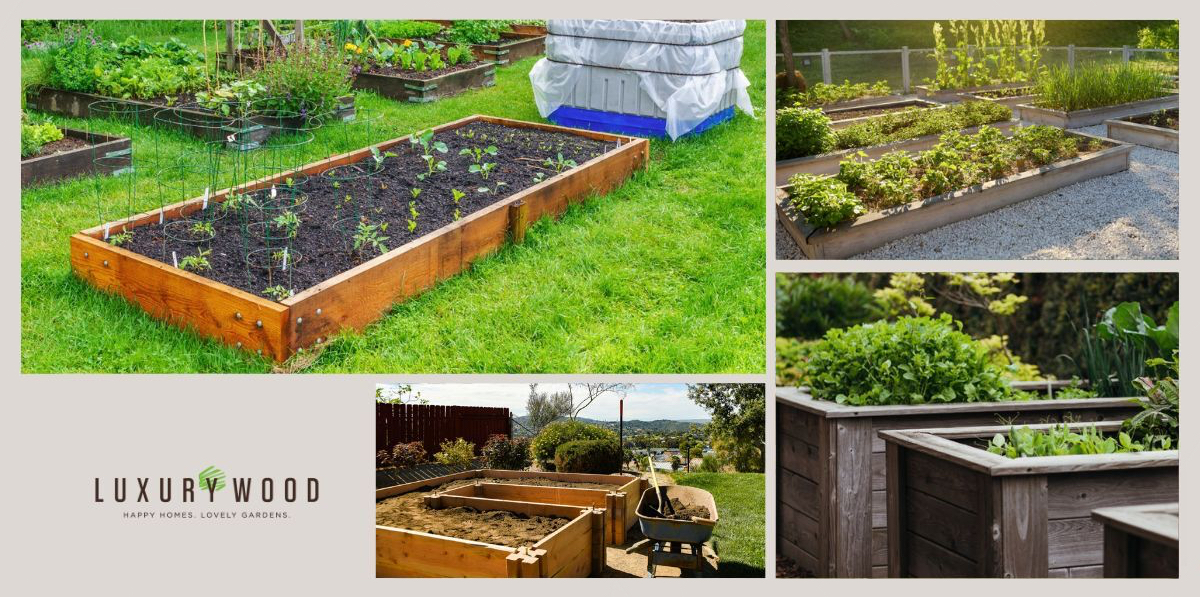
We hope our article has given you the confidence and inspiration you needed to try sleepers in your garden and embrace their rustic feel. Now that you know what is the difference between hardwood and softwood and how they fit different applications, your next landscaping project will surely be a success.



